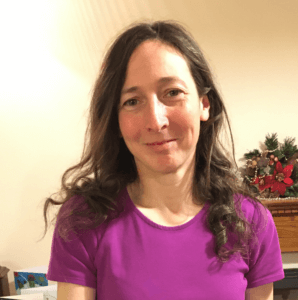We continue with our Professional Identity and Medicines Development series. We are excited to share the perspectives of our students and alumni. Below is an essay written by Dr. Rachel Lawson. The Academy extends its sincerest thanks to Dr. Lawson for her contributions to our community.
“Characterize Professional Identity in Medicines Development and the need for Professional Identity for professionals involved in the field. “

“Professional identity has been described by Wilson et al. (2013) as how one is consciously aware of oneself when performing one’s role. Distinct from the notion of professionalism, professional identity enables one to work in an altruistic fashion, with confidence and, ultimately, be successful. To think and act as a professional is seen as a key part of clinical practice and, in turn, medicines development. The curation of professional values during medical education is crucial with students being supported to form a professional identity (Irby et al., 2010). This has led to recognition of the processes underpinning the formation of a professional identity and the educational strategies that support this (Cruess et al., 2014).
Professional identities are developed and evolve throughout one’s professional career. Initial perceptions of a profession, prior experiences and pre-existing identities form the basis (Wilson et al., 2013). This is further grown and refined through socialization, where experiences and learnings shape one’s professional identity. Interactions with fellow students, mentors and instructors are instrumental whilst studying. Vocationally, interactions with colleagues and stakeholders (including healthcare workers) are instrumental (Weaver et al., 2011). As professional identities form, the person starts to think, to act and feel like the professional they aim to become (Cruess et al., 2014). In medicines development, an initial professional identity as a physician will further evolve as the environment and socialization process are different. The individual will work with a different community compared to that of the pure clinician. The roles the individual plays will differ and, whilst the patient remains at the centre of their thoughts and actions, the patient may represent a group or community rather than a distinct individual. This is demonstrated in the conflicting philosophy of clinical trials and standard clinical care (Cooper, 2012). A strong professional identity helps reframe the conflicts between old identities as physicians and new, as drug developers.
Development of a professional identity requires one to internalise the characteristics, values, and norms of the profession (Jarvis-Selinger et al., 2012). The development of values and adoption of behaviours specific to one’s role in medicines development will reflect the different functions performed. Medical affairs professionals have diverse functions and require a working knowledge of all aspects of drug development. Formal educational courses not only impart the necessary knowledge, but through interactions with fellow students, the course leaders, and lecturers, create experiences and interactions crucial to socialization. Weissman (2015) noted however that not all members of a profession will share the same definition of professional identity. An explicit definition of a profession’s identity is difficult to form, in part due to the individualistic elements that remain, if reduced, during the increasing adoption of the professional self. As such, and given the diversity of roles in medicines development, peoples’ professional identities may differ, and they may have more than one depending upon their function at the time (Elvey et al., 2013).
People who can identify their distinct professional identity tend to value their profession more (Elvey et al., 2013), practice with more confidence and are more successful (Wilson et al., 2013). As a person’s professional identity develops, they can understand the complex, and sometimes opposing, relationships that exist and base actions on reasoned thinking (Cruess et al., 2015). They are more resilient to role pressures and demands (Madsen et al., 2009) and show greater autonomy (Hunter and Warren, 2013). Furthermore, people with a strong sense of professional identity integrate well within multidisciplinary teams (Gilburt, 2016); important in medicines development where many functions come together. In summary, strong professional identities aid medical development personnel in performing, and making a success of their role.”
References
- Cooper C. Research versus Standard of Care: Considerations for the Design & Implementation of your Study. ITHS: Clinical Research Education Series (CRES), June 2012. [Accessed 30th November 2021 via https://www.iths.org/wp-content/uploads/Research-vs-SOC-ITHS-June-1-2012.pdf]
- Cruess RL, Cruess SR, Boudreau JD, Snell L, Steinert Y. Reframing Medical Education to Support Professional Identity Formation. Academic Med. 2014; 89:1446-1451
- Cruess RL, Cruess SR, Boudreau JD, Snell L, Steinert Y. A schematic representation of the professional identity formation and socialisation of medical students and residents: A guide for medical educators. Academic Med. 2015; 90(6):718-725
- Elvey R, Hassell K, Hall J. Who do you think you are? Pharmacists’ perceptions of their professional identity, International Journal of Pharmacy Practice, 2013; p329
- Gilburt H. Supporting integration through new roles and working across boundaries. 2016; King’s Fund, p35 [Accessed 30th Nov 2021 via https://www.kingsfund.org.uk/sites/default/files/field/field_publication_file/Supporting_integration_web.pdf]
- Hunter B, Warren L. Investigating resilience in midwifery. 2013; Cardiff University, p42 [Accessed 30th Nov 2021 via https://orca.cardiff.ac.uk/61594/1/Investigating%20resilience%20Final%20report%20oct%202013.pdf]
- Irby DM, Cook M, O’Brien BC. Calls for reform of medical education by the Carnegie Foundation for the Advancement of Teaching: 1910 and 2010. Academic Med. 2010;85(2):220-227.
- Jarvis-Selinger S, Pratt DD, Regehr G. Competency is not enough: Integrating identity formation into the medical education discourse. Academic Med. 2012;87(9):1185-1190
- Madsen W, McAllister M, Godden J, Greenhill J, Reed R. Nursing’s orphans: how the system of nursing education in Australia is undermining professional identity. Contemporary Nurse, 2009; p10
- Sternszus R, Boudreau JD, Cruess RL, Cruess SR, Macdonald ME, Steinert Y. Clinical Teachers’ Perceptions of their role in Professional Identity Formation. Academic Med. 2020; 95(10):1594-1599
- Weaver R, Peters K, Koch J, Wilson I. ‘Part of the team’: Professional identity and social exclusivity in medical students. Med Educ. 2011;45(12):1220-1229
- Weissman SH. Additional Suggestions for Facilitating Professional Identity Formation. Academic Med. 2015; 90(6):697
- Wilson I, Cowin LS, Johnson M, Young H. Professional Identity in Medical Students: Pedagogical Challenges to Medical Education, Teaching and Learning in Medicine, 2013; p369
Disclaimers
- The material in these reviews is from various public open access sources, meant for educational and informational purposes only
- Any personal opinions expressed are those of only the author(s) and are not intended to represent the position of any organization(s)
- No official support by any organization(s) has been provided or should be inferred















